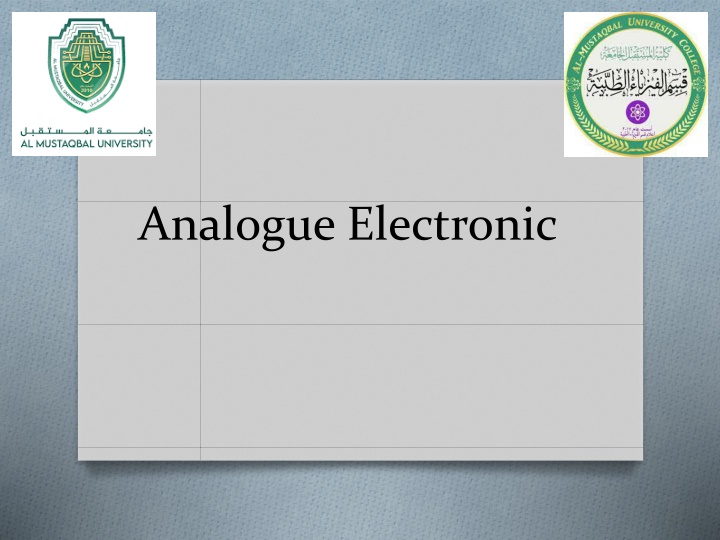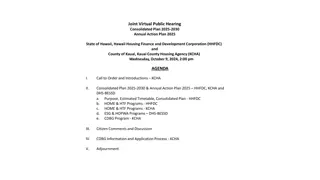
Amplifiers and Transistor Models
Dive into the world of analogue electronics with a focus on amplifiers and transistor AC models. Learn about amplifier operation, linear amplifiers, and the use of transistor model circuits to represent device operation efficiently.
Download Presentation

Please find below an Image/Link to download the presentation.
The content on the website is provided AS IS for your information and personal use only. It may not be sold, licensed, or shared on other websites without obtaining consent from the author. If you encounter any issues during the download, it is possible that the publisher has removed the file from their server.
You are allowed to download the files provided on this website for personal or commercial use, subject to the condition that they are used lawfully. All files are the property of their respective owners.
The content on the website is provided AS IS for your information and personal use only. It may not be sold, licensed, or shared on other websites without obtaining consent from the author.
E N D
Presentation Transcript
Chapter 5 Amplifiers Lec. 10 2
Amplifier Operation DC Quantities use upper case Roman subscripts. Example: VCE (The second letter in the subscript indicates the reference point). AC Quantities and time-varying signals use lowercase subscripts. Example: Vce. Instantaneous quantities are represented by lowercase letters and subscripts such as Ic, Ie, Ib, and Vce. Internal transistor resistances are indicated as lowercase quantities with a prime and an appropriate subscript. An example is the internal ac emitter resistance (r e) . External resistances are indicated as capital R with either a capital or lowercase subscript, depending on if it is a DC or AC resistance. Examples: RC and Rc. 3
The Figure 1 shows an example of a specific waveform for the collector emitter voltage. 4
Linear Amplifier A linear amplifier amplifies a signal without distortion, so the output signal is an exact amplified replica of the input signal. A voltage-divider-biasedtransistor with a sinusoidal AC source capacitive coupled to the base through C1 and a load capacitive coupled to the collector through C2 is shown in Figure 2. Figure 2 For the amplifier shown, notice that the voltage waveform is inverted between the input and output but has the same shape. 5
Transistor AC Models To assume the operation of a transistor in an amplifier circuit, representing the device by a model circuit is often useful. A transistor model circuit usesvarious internal transistor parameters to represent its operation. Transistor models are described in this section based on resistance or r parameters. Another system of parameters is called h parameters. The five r parameters commonly used for BJTs are given in the following. Table 1. The lowercase letter r with a prime denotes resistances internal to the transistor. 6
To explain this model circuit in terms of a transistors AC operation as follows: A resistance (r e) appears between the emitter and base terminals. This is the resistance seen looking into the emitter of a forward-biased transistor. The collector effectively acts as a dependent current source of acIe or, equivalently, acIb, represented by the diamond-shaped symbol; these factors are shown in Figure 3. Figure 3: Relation of transistor symbol to r-parameter model. It is also temperature-dependent and is based on an ambient temperature of 20 C. 7
H.W H.W 1: Determine the (r e) of a transistor that is operating with a DC emitter current of 2 mA. H.W 2: What is IE if (r e) = 8 ? 8















